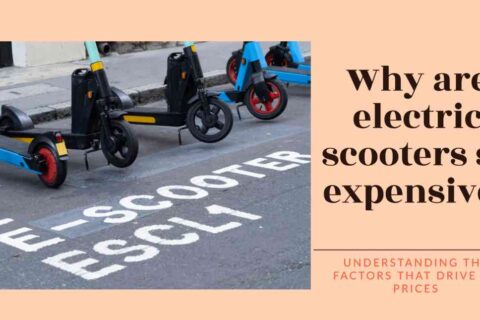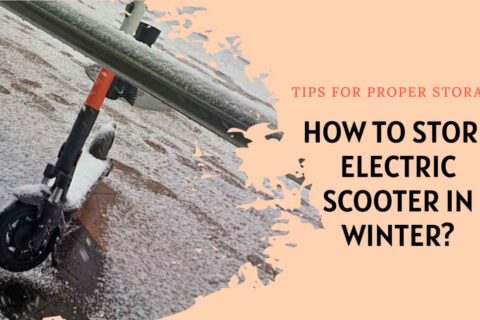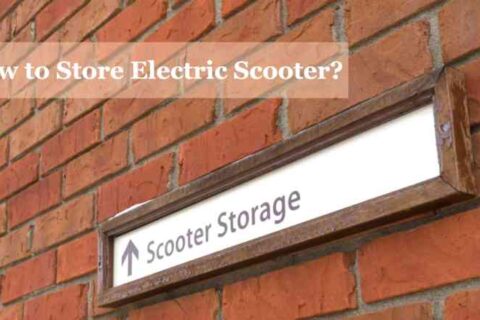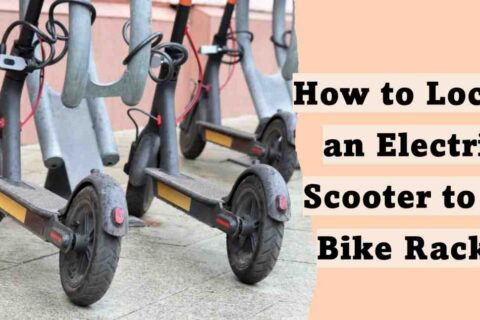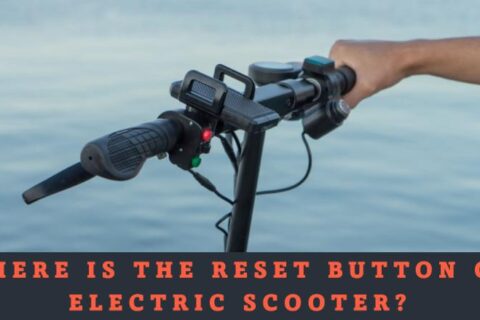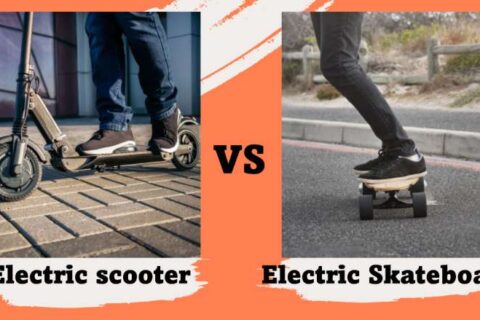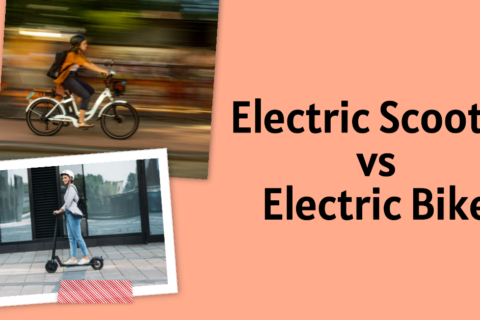If you’re thinking of buying an electric scooter, or you already own one, you might be wondering how long does it take to charge electirc scooter? After all, you don’t want to run out of juice in the middle of your ride or wait for hours before you can hit the road again.
The answer is not so simple, because the charging time of an electric scooter depends on several factors, such as the battery type, the charger type, the power output, and the battery level.
We’ll explain these factors in detail in this article, and give you some tips on how to charge your electric scooter properly and safely.

Table of Contents
ToggleHow Long Does It Take to Charge Electric Scooter Fully?
The average charging time for an electric scooter is around 5 or 6 hours, but some models can take as little as 2 or 3 hours, or as long as 8 or 10 hours.
To charge an electric scooter faster, it is recommended to use a good charger and a high-power output. You can use the table below to estimate how long it will take to charge your electric scooter from 0% to 100%, based on the battery capacity and the charger output.
| Battery Capacity (Ah) | Charger Output (A) | Charging Time (h) |
|---|---|---|
| 5 | 1 | 5 |
| 5 | 2 | 2.5 |
| 10 | 1 | 10 |
| 10 | 2 | 5 |
| 15 | 1 | 15 |
| 15 | 2 | 7.5 |
Note that these are approximate values, and they may vary depending on the battery condition and other factors.
The charging time may also be affected by the radio on the scooter, which may consume some battery power while charging.
How to calculate the charging time for electric scooter?
The good news is that calculating the charging time for an electric scooter is not rocket science. All you need are three pieces of information: the battery capacity, the charger current, and the charging efficiency. These values are usually available on the battery, the charger, or the user manual of your scooter.
The battery capacity tells you how much energy your battery can store, measured in ampere-hours (Ah). The higher the capacity, the longer the range and the charging time of your scooter. For example, a 10 Ah battery can store twice as much energy as a 5 Ah battery.
The charger current tells you how fast your charger can deliver energy to your battery, measured in amperes (A). The higher the current, the shorter the charging time of your scooter. For example, a 2 A charger can charge a battery twice as fast as a 1 A charger.
The charging efficiency tells you how much of the energy delivered by the charger is actually stored in the battery, expressed as a percentage (%). The higher the efficiency, the shorter the charging time of your scooter. For example, a 90% efficient battery can charge faster than a 70% efficient battery.
Once you have these three values, you can use a simple formula to calculate the charging time for your electric scooter:
Charging time (h) = Battery capacity (Ah) / [Charger current (A) * Charging efficiency (%)]
Let’s see an example with some real numbers. Suppose you have an electric scooter with a 12 Ah lithium-ion battery and a 1.5 A charger. The charging efficiency of lithium-ion batteries is typically around 90%. Plugging these values into the formula, we get:
Charging time (h) = 12 Ah / [1.5 A * 0.9] = 8.89 hours
This means that it will take about 8 hours and 53 minutes to fully charge your electric scooter from zero to 100%. Of course, this is just an estimate and it may vary depending on other factors such as temperature, age of the battery, and level of discharge.
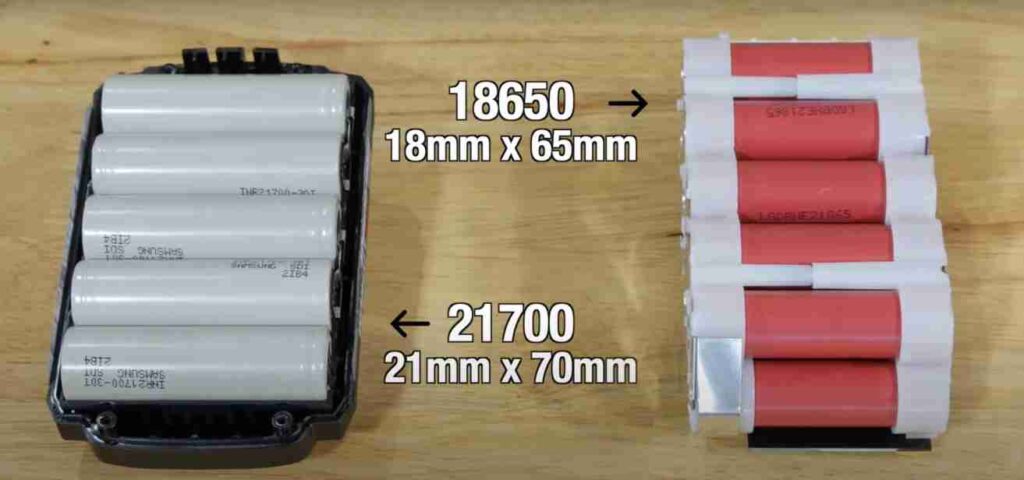
Influence of Battery Type and Capacity on Charging Time
Another factor that affects how long does it take to charge electric scooter is the type and capacity of the battery. The type and capacity of the battery determine how much energy can be stored in the battery and how fast it can be charged.
The most common types of batteries used in electric scooters are lead-acid batteries and lithium-ion batteries.
Lead-acid batteries are cheaper and more durable than lithium-ion batteries, but they are also heavier and bulkier. They have lower energy density and lower power output than lithium-ion batteries. They also have longer charging
time than lithium-ion batteries, and they also suffer from memory effect, which means that they lose their capacity if they are not fully discharged and recharged periodically.
Lithium-ion batteries are more expensive and more sensitive than lead-acid batteries, but they are also lighter and more compact. They have higher energy density and higher power output than lead-acid batteries. They also have shorter charging time and no memory effect, which means that they can be charged at any level without affecting their capacity.
The capacity of the battery is the measure of how much energy can be stored in the battery. It is expressed in ampere-hours (Ah) or watt-hours (Wh). The higher the capacity, the longer the range and the longer the charging time of your electric scooter.
However, you also need to multiply the result by a factor that depends on the battery type and charging efficiency:
- For lead-acid batteries, multiply by 1.4
- For lithium-ion batteries, multiply by 1.1
For example, if you have a 12 Ah lead-acid battery and a 2 A charger, it will take:
Charging time = (12 / 2) x 1.4 = 8.4 hours
If you have a 12 Ah lithium-ion battery and a 2 A charger, it will take:
Charging time = (12/ 2) x 1.1 = 6.6 hours
Of course, these formulas are only estimates and do not account for other factors such as temperature or battery degradation. Therefore, you should always add some extra time to be safe.
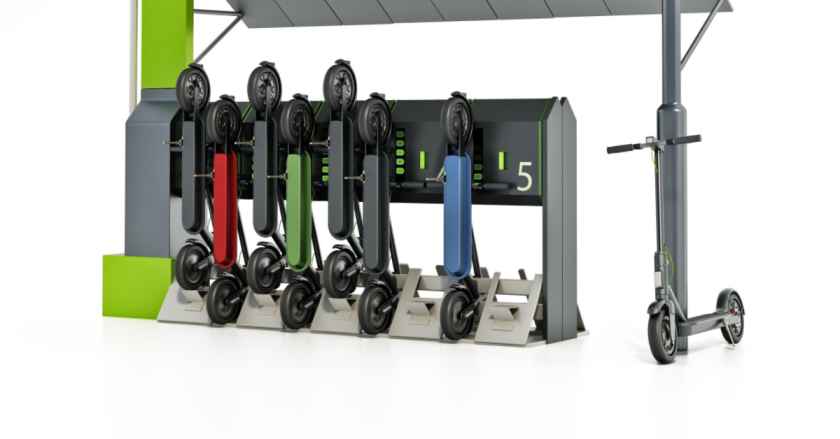
Are Charging Times the Same for All Electric Scooter Models?
Charging times are not the same for all electric scooter models. Different models have different battery types, sizes, and voltages, which affect how long they take to charge.
The most common battery types for electric scooters are lead-acid and lithium-ion. Lead-acid batteries are cheaper and more durable, but they are heavier, bulkier, and have lower energy density than lithium-ion batteries. Lithium-ion batteries are lighter, smaller, and have higher energy density, but they are more expensive and require more care.
Generally speaking, lithium-ion batteries charge faster than lead-acid batteries, because they have lower internal resistance and higher efficiency. However, this also depends on the charger type and power output.
For example, a lead-acid battery with a capacity of 12 Ah and a voltage of 36 V will take about 6 hours to charge with a standard charger that has an output of 2 A and a voltage of 42 V. A lithium-ion battery with the same capacity and voltage will take about 4 hours to charge with the same charger.
To make things easier for you, we have created a table with some common electric scooter models and their estimated charging times based on their battery capacity and charger current. You can use this table as a reference or check out our electric scooter charge time calculator for more options.
| Electric Scooter Model | Battery Capacity (Ah) | Charger Current (A) | Estimated Charging Time (h) |
|---|---|---|---|
| Xiaomi M365 | 7.8 | 1.7 | 5.08 |
| Segway Ninebot ES2 | 5.2 | 1.42 | 4.07 |
| Razor E300 | 7 | 0.6 | 12.96 |
| Glion Dolly | 7.8 | 2 | 4.33 |
| Gotrax GXL V2 | 5.2 | 1.5 | 3.85 |
However, if you use a fast charger that has an output of 4 A and a voltage of 54 V, you can charge the lead-acid battery in about 3 hours, and the lithium-ion battery in about 2 hours.
Factors Can Affect the Charging Time of an Electric Scooter
The battery type – As we mentioned before, lithium-ion batteries charge faster than lead-acid batteries.
The battery size – The larger the battery capacity (measured in ampere-hours or Ah), the longer it will take to charge.
The battery voltage – The higher the battery voltage (measured in volts or V), the longer it will take to charge.
The charger type – There are different types of chargers for electric scooters, such as standard chargers, fast chargers, smart chargers, etc. They have different outputs (measured in amperes or A) and voltages (measured in volts or V). The higher the output and voltage of the charger, the faster it will charge the battery.
The power output – This is the amount of electricity that is available from the power source (such as a wall outlet) where you plug in your charger. The higher the power output (measured in watts or W), the faster it will charge your battery.
The battery level – The lower the battery level (measured in percentage or %), the faster it will charge. This is because the charging speed is not constant, but it decreases as the battery gets closer to full. This is to prevent overcharging and overheating the battery.
How to find the best charger for an electric scooter?
The best charger for an electric scooter is the one that matches the specifications of your electric scooter battery. The specifications of your electric scooter battery are usually indicated on a label on the battery itself, or in the user manual of your electric scooter. The specifications include:
- The plug type: This is the shape and size of the connector that plugs into your electric scooter charging port. There are different types of plugs, such as 3-prong, 1-prong, DC coaxial, J1772, etc. You need to make sure that your charger has the same plug type as your electric scooter.
- The polarity: This is the direction of the current flow in the connector. There are two types of polarity: positive (+) and negative (-). You need to make sure that your charger has the same polarity as your electric scooter.
- The voltage: This is the measure of the electrical potential difference between two points in a circuit. It is expressed in volts (V). You need to make sure that your charger has the same voltage as your electric scooter battery.
- The current: This is the measure of the rate of flow of electric charge in a circuit. It is expressed in amperes (A). You need to make sure that your charger has a current output that is compatible with your electric scooter battery.

What factors affect the charging time of an electric scooter?
The charging time of an electric scooter depends mainly on three factors: the battery capacity, the charger current, and the charging efficiency. There are also some external factors that can affect the charging time of your electric scooter, such as
The level of discharge of your battery
When the battery is at a low discharge level, the charging process can take longer because batteries have two charging stages: constant current and constant voltage.
The constant current stage charges the battery quickly and efficiently until it reaches around 80% capacity, while the constant voltage stage is slower and less efficient, gradually reducing the current as the battery approaches 100% capacity.
To prolong your battery’s lifespan, experts suggest charging your electric scooter frequently and avoiding complete drain.
The temperature and weather conditions
Heat can cause your battery to overheat, which can reduce its efficiency and capacity. Overheating can also damage the internal components of your battery and cause permanent degradation.
Cold can cause your battery to lose its charge faster, which can reduce its range and performance. Cold can also slow down the chemical reactions inside your battery, which can affect its charging speed and efficiency.
The ideal temperature range for charging your electric scooter is between 15°C and 25°C (59°F and 77°F). If you live in a place where the temperature is outside this range, you may want to consider storing and charging your electric scooter indoors or in a climate-controlled space.
The age and condition of your battery
The degradation rate of batteries depends on several factors, such as their type, quality, usage, maintenance, and storage. Generally speaking, lithium-ion batteries have a longer lifespan than sealed lead-acid batteries, but they still degrade over time.
One way to measure the degradation of batteries is by their cycle life. A cycle life is defined as one full charge and discharge cycle of a battery. For example, if you charge your electric scooter from 0% to 100% and then use it until it reaches 0% again, that counts as one cycle.
The cycle life of batteries varies depending on their type and quality. For example, some lithium-ion batteries can last up to 1000 cycles before they lose 20% of their original capacity, while some sealed lead-acid batteries can only last up to 300 cycles before they lose 50% of their original capacity.
The quality and compatibility of your charger
The quality of your charger refers to how well it can deliver the right amount of current and voltage to your battery without causing any issues.
A good charger should be able to charge your electric scooter fast and safely, without overheating, short-circuiting, or damaging your battery.
The compatibility of your charger refers to how well it matches the specifications of your battery and your electric scooter. A compatible charger should have the same plug type, polarity, voltage, and current as your battery and your electric scooter.
A mismatched charger can cause undercharging, overcharging, or even fire hazards.
The power output of your wall outlet
The power output of wall outlets varies depending on the country, region, or even building you live in.
For example, in the US, most wall outlets have a standard voltage of 120 V and a current of 15 A, while in Europe, most wall outlets have a standard voltage of 230 V and a current of 10 A.
The power output of wall outlets can also vary depending on the wiring, circuit breaker, or other devices connected to the same outlet.
For example, if you plug your electric scooter into an outlet that is already powering a refrigerator, a microwave, or a hairdryer, you may experience a drop in voltage or current, which can slow down the charging process.

Troubleshooting Common Charging Problems
Sometimes, you may encounter some problems when charging your electric scooter, such as slow charging, no charging, or incomplete charging.
Slow charging:
If your electric scooter is charging slower than usual, it could be due to a low-quality or damaged charger, a low-quality or damaged power outlet, a low-quality or damaged extension cord, a dirty or corroded charging port or connector, a cold or hot environment, or an old or degraded battery.
To fix this problem
You should try using a different charger, power outlet, extension cord, or environment. You should also clean the charging port and connector with a dry cloth or compressed air.
No charging:
If your electric scooter is not charging at all, it could be due to a broken or incompatible charger, a broken or incompatible power outlet, a broken or incompatible extension cord, a broken or incompatible charging port or connector, a broken or disconnected wiring, a blown fuse, or a dead battery.
To fix this problem
try using a different charger, power outlet, or extension cord. Check the compatibility of your charger with the electric scooter and inspect the charging port and connector for physical damage or loose connections. Additionally, examine the wiring and fuse for any breaks or burns. Test the battery voltage with a multimeter and consider a replacement if it falls below 10V.
Incomplete charging:
If your electric scooter is not charging to full capacity, it could be due to an old or degraded battery, an inaccurate battery indicator, an interrupted charging process, or an overprotective charger.
To fix this problem
Try calibrating your battery indicator by fully discharging and recharging your electric scooter occasionally. Avoid interrupting the charging process and check if your charger has an overprotective feature preventing overcharging. If necessary, use a different charger without this feature.

Are Fast Chargers Safe to Use for Electric Scooters?
Fast chargers are chargers that have a higher output and voltage than standard chargers, and they can charge an electric scooter in a shorter time. For example, a fast charger that has an output of 4 A and a voltage of 54 V can charge an electric scooter with a 12 Ah battery in about 2 hours.
Fast chargers are chargers that can deliver a higher current output than standard chargers, which can reduce the charging time of your electric scooter by more than 50%. However, fast chargers have both pros and cons that you should be aware of before using them.
| Pros of Using Fast Chargers | Cons of Using Fast Chargers |
|---|---|
| Save you time and hassle by charging faster | Cause more stress and wear on the battery |
| Provide quick power boost in emergencies or long trips | Increase the risk of overcharging or undercharging |
| Improve performance and range in cold weather | May void electric scooter warranty if not manufacturer-approved |
To use fast chargers safely and effectively, you should follow these tips:
- Choose a compatible and quality fast charger that matches the specifications of your electric scooter battery
- Use a fast charger sparingly and only when necessary, not as your regular or primary charger
- Follow the 80/30 rule and never let your battery drop below 30% or charge above 80% of its capacity
- Monitor the charging process and disconnect your electric scooter on time when it is done or when it gets too hot
Frequently Asked Questions (FAQs)
Is It Possible to Overcharge an Electric Scooter?
Yes, it is possible to overcharge an electric scooter. Overcharging means charging the battery beyond its full capacity, which can cause damage to the battery cells, reduce the battery life, and even pose a fire hazard.
Can I Use a Regular Wall Outlet to Charge My Electric Scooter?
Yes, as long as you have a compatible charger and adapter. Most electric scooters come with a charger that can be plugged into a standard 110V or 220V wall outlet, depending on your country and region.
How do you know when your electric scooter is fully charged?
You can tell when your electric scooter is fully charged by looking at the charging indicator on your charger or your electric scooter. Usually, the indicator will change color from red to green when the battery is full.
How far can an electric scooter go on a full charge?
On average, you can expect to go between 10 and 25 miles on a full charge. Some electric scooters can go even further, up to 62 miles or more.
Conclusion
In conclusion, how long does it take to charge electric scooter depends on several factors, including the battery type, capacity, charger output, and charging efficiency.
On average, it takes around 5 to 6 hours to fully charge an electric scooter, but this can vary depending on the model and specifications. To charge an electric scooter faster, it is recommended to use a good charger with a higher power output.
However, using fast chargers has its pros and cons, as they can save time but may cause more stress and wear on the battery.
It’s essential to choose a compatible and quality charger, follow the recommended charging practices, and avoid extreme weather conditions to ensure the longevity of your electric scooter’s battery.
Always consult your scooter’s user manual and manufacturer’s guidelines for the best charging practices to maintain your electric scooter’s performance and range.



